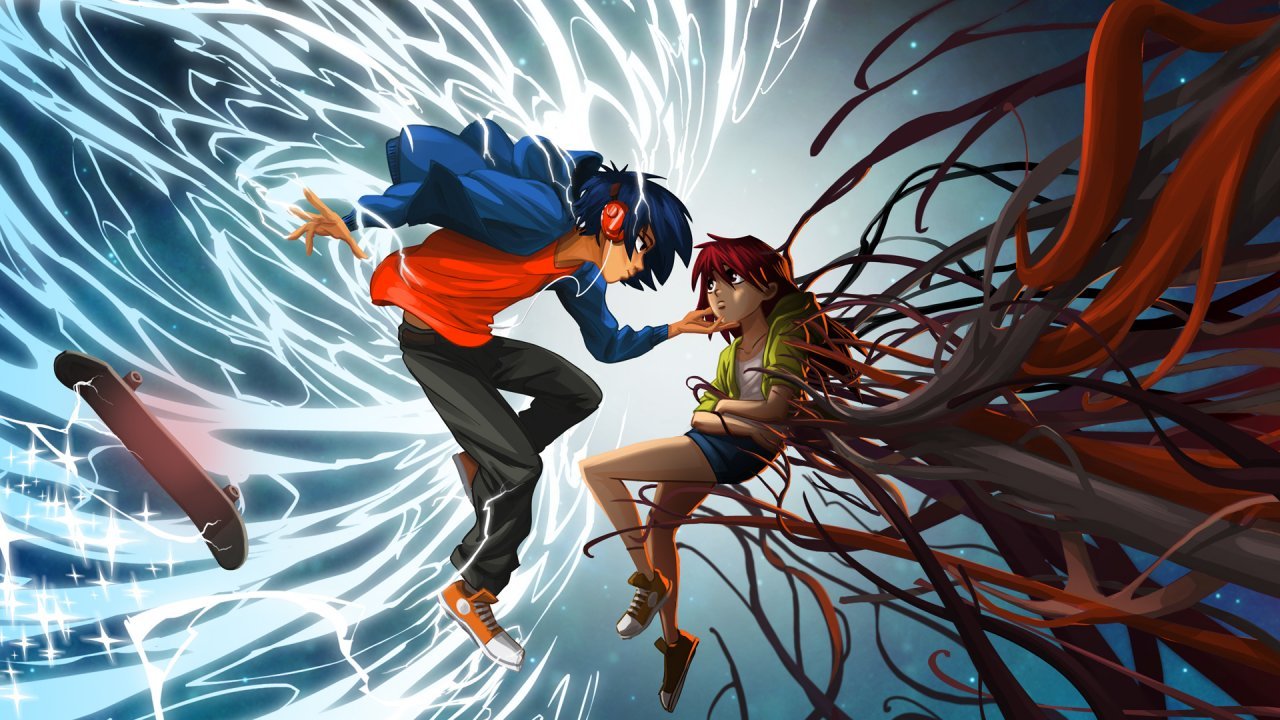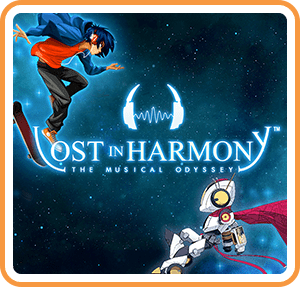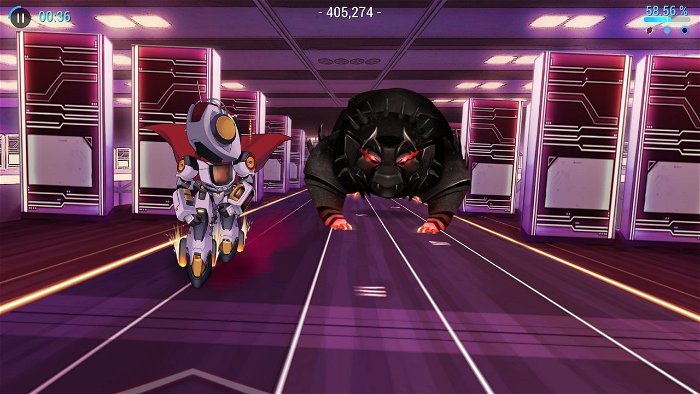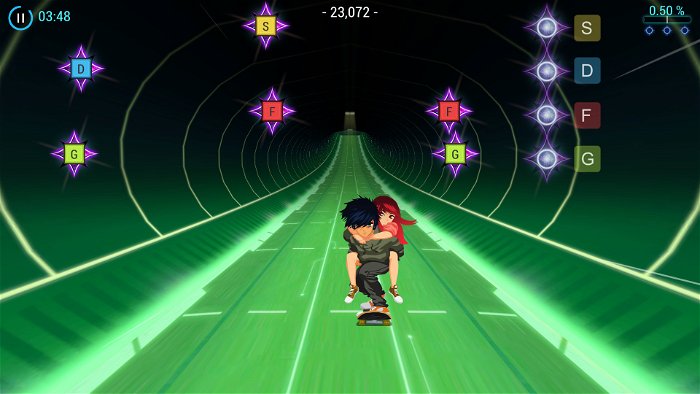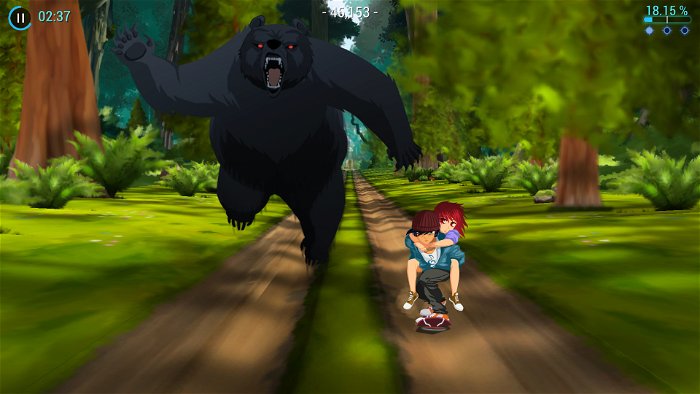Porting mobile games to the Nintendo Switch has become a common practice for the console. This is proving to be especially true when it comes to rhythm-based games, such as Voez and Deemo. Lost in Harmony is another rhythm-based mobile game adapted for Switch, developed by DigixArt. Unfortunately, Lost in Harmony’s blended gameplay mechanics don’t always mesh together all that well, a flaw even more apparent after transitioning over to a dedicated gaming console.
Originally released in 2016, Lost in Harmony consists of two separate stories told through a series of stages. The first story, Kaito’s Adventure, follows Kaito and his sickly friend Aya. Each stage takes place in Kaito’s dreams, where he and Aya attempt to escape from all their troubles in the real world. The game’s second story is M.I.R.A.I.’s Escape, which focuses on a music-loving robot finding its way to earth in search of fame. Neither of these stories has any effect on the overall gameplay and can be played in any order. Kaito’s Adventure isn’t at all what I’d call original but the dream aspect of it all was at least somewhat sweet. M.I.R.A.I.’s Escape, on the other hand, is far more nonsensical but at the same time, a more fun story overall. In the end, neither of Lost in Harmony’s stories are all that strong or memorable.
Lost in Harmony’s visuals are its greatest quality. Making use of a unique anime-inspired art style, a still image of the game might have you believing it was an animated series. In motion however, Lost in Harmony’s limited frames of animation make the game look a bit less polished than it should. The music chosen for Lost in Harmony is what feels truly random. The game mostly uses arrangements of famous orchestral pieces from composers such as Tchaikovsky. Not only does it rarely suit the game’s style or story, they also aren’t all that fun to play along to. Unlike any other rhythm-based game however, music has very little to do with Lost in Harmony. Unsurprisingly, this is one of the game’s biggest faults.
Lost in Harmony attempts to gel the gameplay mechanics of an endless runner with that of a traditional rhythm game. Controlling either Kaito or M.I.R.A.I., players can move to the left or right as they travel along a path from a front-facing perspective. At certain points throughout each stage, the gameplay will require players to press the corresponding buttons as they come in horizontally across the screen. The switch between these two types of gameplay is immediate and can be quite jarring, especially if you don’t know it’s coming. This problem becomes even more difficult to deal with during Lost in Harmony’s later stages where frequently switching between the two gameplay styles without warning becomes more common.
The front-facing camera angle also proves to be a major hinderance to Lost in Harmony’s gameplay. Many of the game’s obstacles and collectables lie ahead of you, meaning that you’ll be spending a lot of time looking for the briefly appearing warnings of what’s coming up rather than the potential scrolling music beats or even the obstacles coming from any other direction. Ultimately, this coincides with the fact that Lost in Harmony’s music has almost no impact on its gameplay. While there are times where your movements will end up in sync with the stage’s tune, in most cases it’s easier and sometimes necessary to ignore the music playing and focus solely the warnings to time dodging. Thankfully, this flaw doesn’t apply to the timed button-pressing, but this only furthers the disconnect between the two different gameplay mechanics.
A big part of Lost in Harmony’s difficulty comes from its controls, an issue that wasn’t nearly as prevalent in the original mobile version of the game. Lost in Harmony’s Switch version supports touch controls that make for a better experience, but because the game recognizes the Joy-Con controls by default with no way of turning them off, it’s impossible to recreate the mobile version’s gameplay completely. What’s worse is that the game doesn’t even make use of all the buttons it has available. One of the buttons used to make timed presses also causes the character to jump. This can lead to a lot of frustrating mistakes that are nearly unavoidable.
Lost in Harmony sets out to do something ambitious by mixing two genres together but instead ends up feeling like two separate, subpar games jammed together. It seems clear that Lost in Harmony was lazily ported over from mobile devices and poorly optimized in the process. While I like the idea of a more prominent story featured in a rhythm game, Lost in Harmony fumbles over some of the core mechanics that many rhythm-based games have mastered a long time ago, unfortunately making for a less artistic and more tiring experience.
